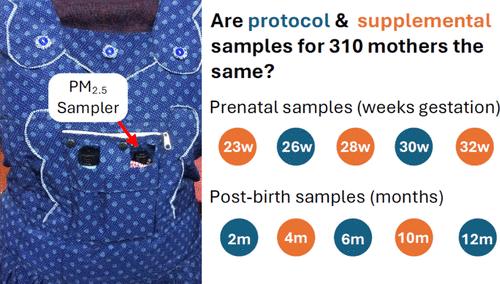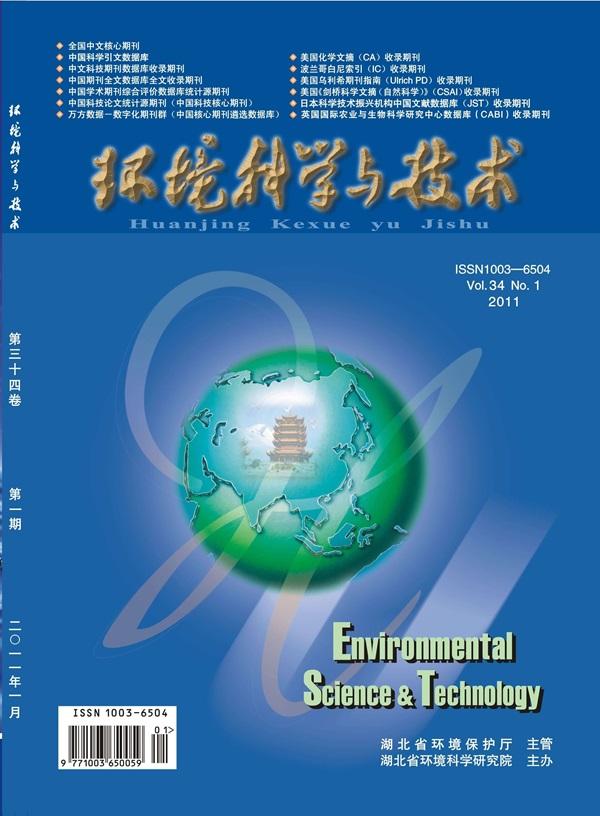Optimizing Exposure Measures in Large-Scale Household Air Pollution Studies: Results from the Multicountry HAPIN Trial
IF 10.8
1区 环境科学与生态学
Q1 ENGINEERING, ENVIRONMENTAL
引用次数: 0
Abstract
Repeated measurements of household air pollution may provide better estimates of average exposure but can add to costs and participant burden. In a randomized trial of gas versus biomass cookstoves in four countries, we took supplemental personal 24-h measurements on a 10% subsample for mothers and infants, interspersed between protocol samples. Mothers had up to five postrandomization protocol measurements over 16 months, while infants had three measurements over one year. For the subsample, we added up to 6 supplemental postrandomization samples for mothers and 3 for infants, measuring PM2.5, black carbon (BC) (mothers only), and carbon monoxide (CO) at each visit. 310 mothers had both protocol (n = 1026) and supplemental (n = 1099) valid exposure measurements. For children, supplemental data sufficient for analysis were collected in only two countries; 94 infants had both protocol (n = 317) and supplemental (n = 234) samples. The geometric means for protocol and supplemental samples for mothers for PM2.5 were 37 μg/m3 and 38 μg/m3, respectively, while for infants, they were 42 μg/m3 and 46 μg/m3. Mixed models comparing supplemental to protocol samples, controlling for covariates, found few differences between protocol and supplemental samples. Supplemental analyses among control mothers with complete protocol measurements found that an average of three measurements explained 81% of the variance of the average of all six measurements.

优化大规模家庭空气污染研究中的暴露措施:来自多国HAPIN试验的结果
对家庭空气污染的反复测量可以更好地估计平均暴露量,但会增加成本和参与者负担。在四个国家的燃气炉灶与生物质炉灶的随机试验中,我们对10%的母亲和婴儿的子样本进行了补充的个人24小时测量,散布在协议样本之间。母亲在16个月内进行了多达5次随机方案测量,而婴儿在一年内进行了3次测量。对于子样本,我们为母亲添加了6个补充随机化样本,为婴儿添加了3个补充随机化样本,在每次访问时测量PM2.5,黑碳(BC)(仅限母亲)和一氧化碳(CO)。310名母亲接受了方案(n = 1026)和补充(n = 1099)有效的暴露测量。对于儿童,仅在两个国家收集了足以进行分析的补充数据;94名婴儿同时有方案样本(n = 317)和补充样本(n = 234)。方案样本和补充样本对母亲PM2.5的几何均值分别为37 μg/m3和38 μg/m3,对婴儿PM2.5的几何均值分别为42 μg/m3和46 μg/m3。混合模型比较补充样本和方案样本,控制协变量,发现方案和补充样本之间几乎没有差异。对具有完整方案测量的对照母亲的补充分析发现,平均三次测量解释了所有六次测量平均值方差的81%。
本文章由计算机程序翻译,如有差异,请以英文原文为准。
求助全文
约1分钟内获得全文
求助全文
来源期刊

环境科学与技术
环境科学-工程:环境
CiteScore
17.50
自引率
9.60%
发文量
12359
审稿时长
2.8 months
期刊介绍:
Environmental Science & Technology (ES&T) is a co-sponsored academic and technical magazine by the Hubei Provincial Environmental Protection Bureau and the Hubei Provincial Academy of Environmental Sciences.
Environmental Science & Technology (ES&T) holds the status of Chinese core journals, scientific papers source journals of China, Chinese Science Citation Database source journals, and Chinese Academic Journal Comprehensive Evaluation Database source journals. This publication focuses on the academic field of environmental protection, featuring articles related to environmental protection and technical advancements.
 求助内容:
求助内容: 应助结果提醒方式:
应助结果提醒方式:


